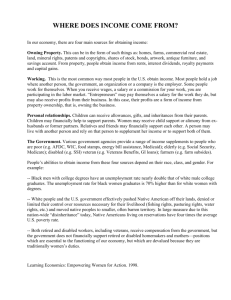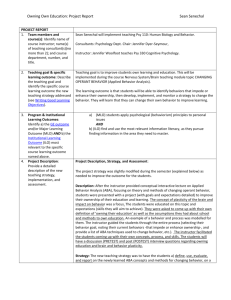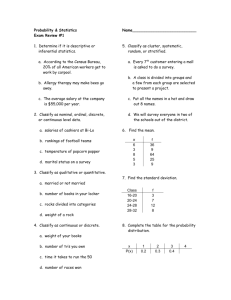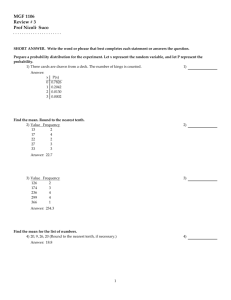Document
advertisement
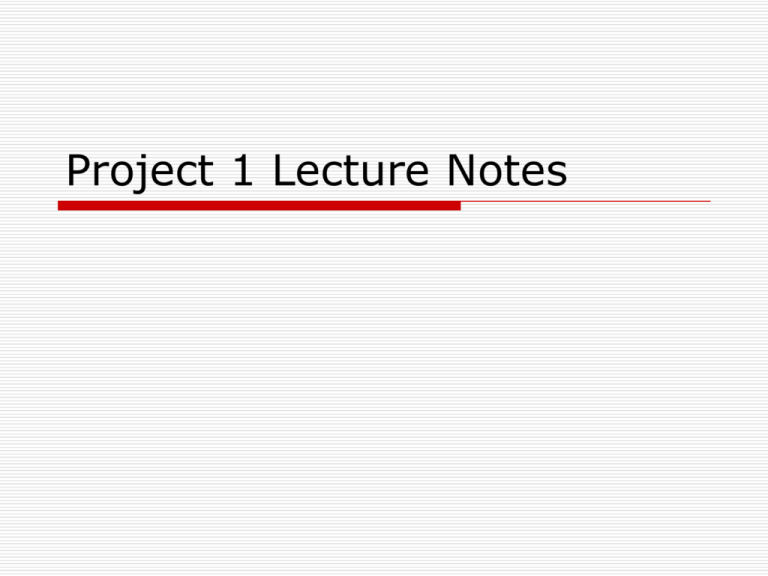
Project 1 Lecture Notes
Table of Contents
•
•
•
•
•
•
•
Basic Probability
Word Processing Mathematics
Summation Notation
Expected Value
Database Functions and Filtering
Conditional Probability
Bayes’ Theorem
Basic Probability
Sometimes outcomes are determined
by chance
A collection of outcomes is called an
event
The probability of an event, denoted
P(E), is the likelihood an event E will
occur
Basic Probability
P(E) is always between 0 and 1
This means there is between a 0%
chance and 100% chance an event E will
occur
Basic Probability
Three ways to determine probability
Empirically (through trials)
Flip a coin a 100 times. How many times do you expect
to see heads? What about a 1000 flips?
By Authority (an expert)
Meteorologist says there’s a 30% chance of rain
Common Agreement (universally accepted)
Roll a dice. What are your chances of getting a six?
Basic Probability
Empirically-based probabilities mean:
The fraction of times an event E occurs
in a large number of trials will be very
close to P(E)
Universally-based probabilities mean:
# of ways for E to occur
P(E) =
Total # of possible outcomes
Basic Probability
Properties of Probability
(i) 0≤P(E)≤ 1 for any event E
(ii) If E is guaranteed to occur, then P(E)=1
(iii) If E and F cannot happen at the same
time, then P(E or F) = P(E) + P(F)
Basic Probability
Properties of Probability (cont)
The collection of all possible outcomes in
an experiment is called the sample
space and is denoted by the letter S.
So property (iii) is equivalent to P(S)=1
Basic Probability
Venn diagrams:
E
F
EF
The union of E andF, represented by E U F
is the collection of items that appear in E
or F or in both E and F.
Basic Probability
Venn Diagrams
An example:
Let
Let
Let
Let
S = {letters in alphabet}
V = {vowels}
C = {consonants}
F = {1st three letters in alphabet}
Basic Probability
V U F = { a, b, c, e, i, o, u }
The set of
vowels
The set
of 1st
three
letters
Basic Probability
Venn diagrams:
E
EF
F
The intersection of E and F, represented
by E ∩ F is the collection of terms that
appear in both E and F.
Basic Probability
V∩F={a}
The set of
vowels
V∩F
The set
of 1st
three
letters
Basic Probability
More Properties:
The empty set, represented by { }, is the set
containing no items.
If E ∩ F = { }, then there are no members that appear
in both E and F.
We say that E and F are mutually exclusive events.
They cannot happen both at the same time.
Basic Probability
V∩C={}
The set of
vowels
The set
of 1st
three
letters
Basic Probability
Properties
(iv) PE F PE PF PE F
and
PE F PE PF PE F
E
F
EF
EF
Basic Probability
The last statement means property (iii) can
be rewritten as:
If E and F are mutually exclusive, then P(EUF) =
P(E) + P(F)
If E, F, G are pair-wise mutually exclusive,
then P(E U F U G) = P(E) + P(F) + P(G)
For more events, the process is similar
Basic Probability
More Properties:
The complement of
an event E, written
as EC , is the set of
items NOT
contained in E.
Notice in the last
Venn Diagram, C =
VC
P(EC) = 1 – P(E)
Basic Probability
DeMorgan’s Laws: E F E F
C
C
C
F
E
EC
FC
Basic Probability
DeMorgan’s Laws: E F E F
C
C
C
So everything
minus the
intersection
F
E
EC
FC
Basic Probability
DeMorgan’s Laws:
E F
C
C
E F
C
C
C
EF
C
EF
This leads to two more properties:
C
C
C
(vi) PE F P E F 1 PE F
C
C
C
(vii) PE F P E F 1 PE F
Basic Probability
Ex. Suppose we toss a fair coin 3 times.
The sample space is given by S = {HHH,
HHT, HTH, HTT, THH, THT, TTH, TTT}.
What is the probability of getting exactly 2
tails?
Soln. We count all of the times when there
are exactly 2 tails: HTT, THT, TTH. Since
there are 8 possible outcomes, the answer
is 3/8.
Basic Probability
Ex. Suppose the probability of owning
a house (H) is 47% while the
probability of owning a car (C) is 73%.
If the probability of owning a house
and a car is 28%, find the probability
of owning a house or a car.
Basic Probability
Soln.
PH C PH PC PH C
0.47 0.73 0.28
0.92
Therefore, the probability of owning a
house or a car is 92%.
Basic Probability
Ex. Suppose the probability of owning
a house (H) is 47% while the
probability of owning a car (C) is 73%.
If the probability of owning a house
and a car is 28%, find the probability
of not owning a house.
Basic Probability
• Soln.
P H C 1 P H
1 0.47
0.53
Therefore, the probability of not
owning a house is 53%.
Basic Probability
Ex. Suppose the probability of owning
a house (H) is 47% while the
probability of owning a car (C) is 73%.
If the probability of owning a house
and a car is 28%, find the probability
of neither owning a house nor owning
a car.
Basic Probability
Soln. We want to find PH C C C ,
that is no house and no car.
P H C
C
C
PH C
C
1 P H C
1 PH PC PH C
1 0.47 0.73 0.28
1 0.92
0.08
Basic Probability
Ex. Suppose the probability of owning
a house (H) is 47% while the
probability of owning a car (C) is 73%.
If the probability of owning a house
and a car is 28%, find the probability
of not owning a house and owning a
car.
Basic Probability
Soln. We want to find PH C C , that
is no house and a car. When you want
to find “not A intersect B,” draw a Venn
diagram.
H
C
P H C PC PH C
0.73 0.28
0.45
C
H C
H C
Basic Probability
Correct & Incorrect notation:
Correct
Incorrect
EF S
PE PF 0.75
PE PF 0.75
P E C 1 P E
EC 1 E
PE
C
EF S
P E
C
Basic Probability
Focus on the Project:
Define variables:
S: successful loan work out
F: failed loan work out
Use Loan Records.xls and COUNTIF
function in Excel
Basic Probability
Focus on the Project:
Range is the collection of cells from which you want to count
Criteria is the information you want to count
Basic Probability
Focus on the Project:
Range: G11:G8236
Criteria: “yes”
Range: G11:G8236
Criteria: “no”
Basic Probability
Focus on the Project:
3818 successful work out situations
4408 failed work out situations
8226 total records
Basic Probability
Focus on the Project:
P S
3818
8226
0.464
P F
4408
8226
0.536
Basic Probability
Focus on the Project:
These probabilities are generally true for
the typical borrower
However, they do not account for the
specific characteristics of John Sanders

